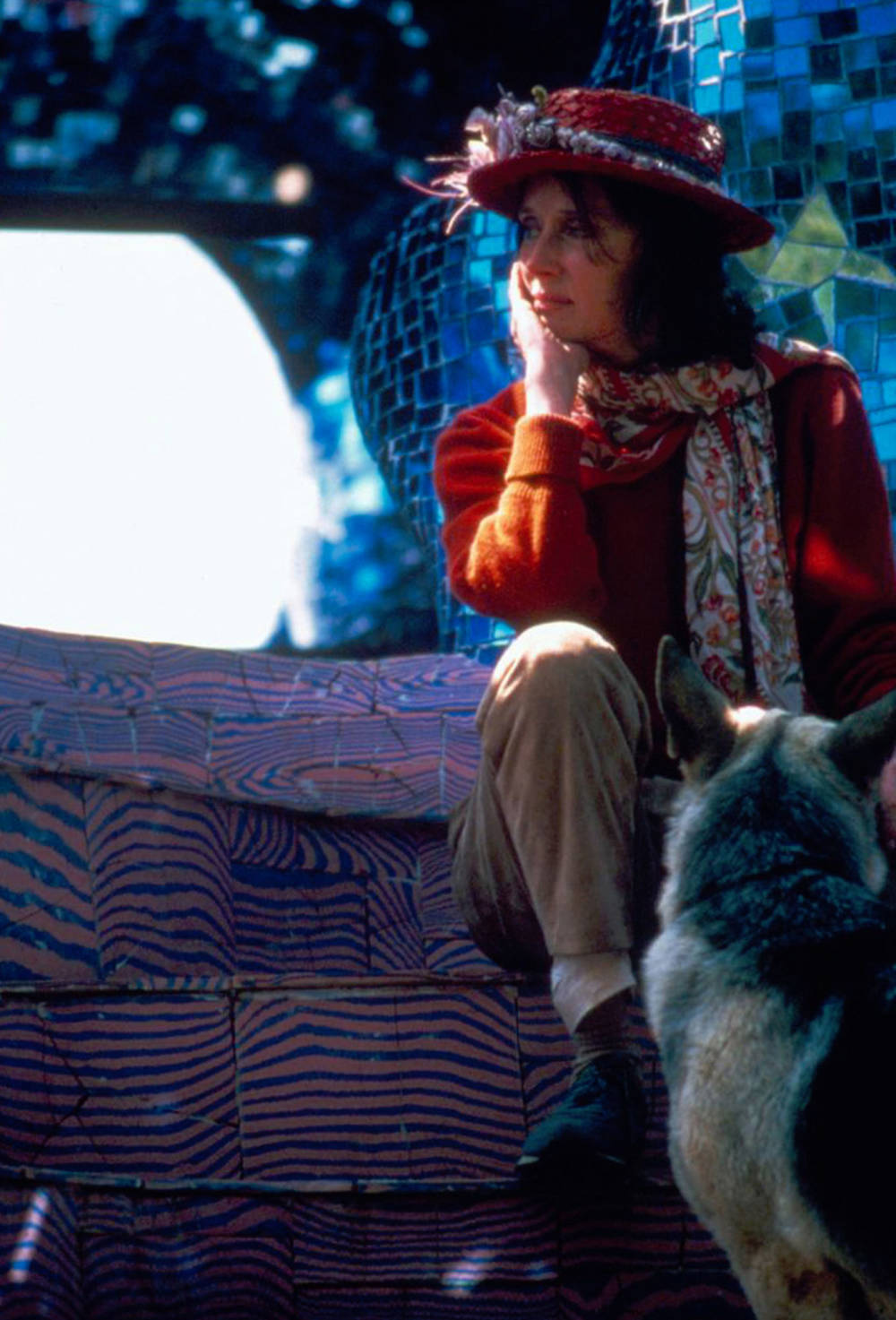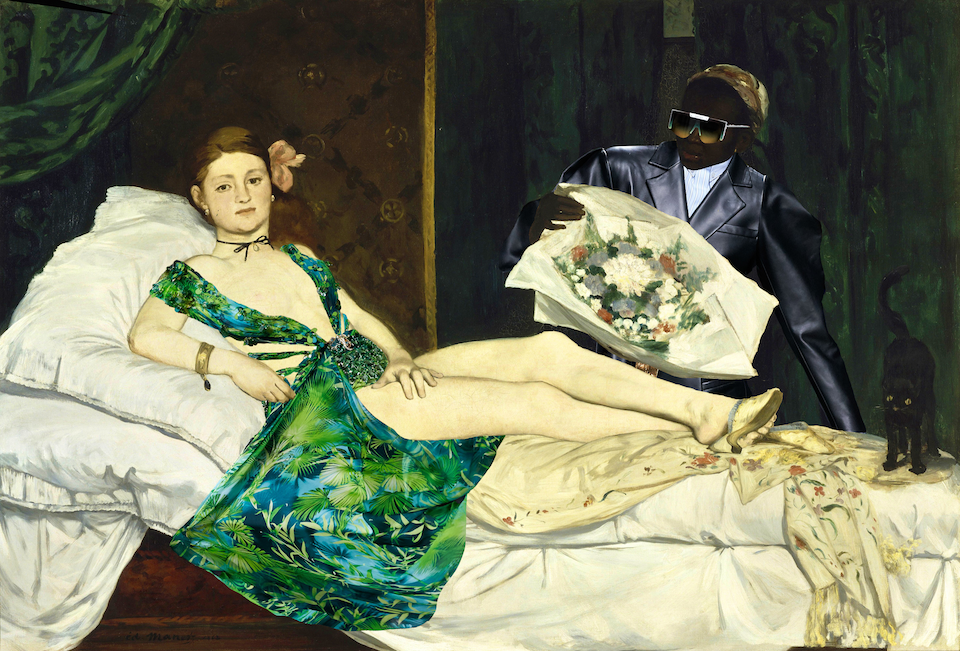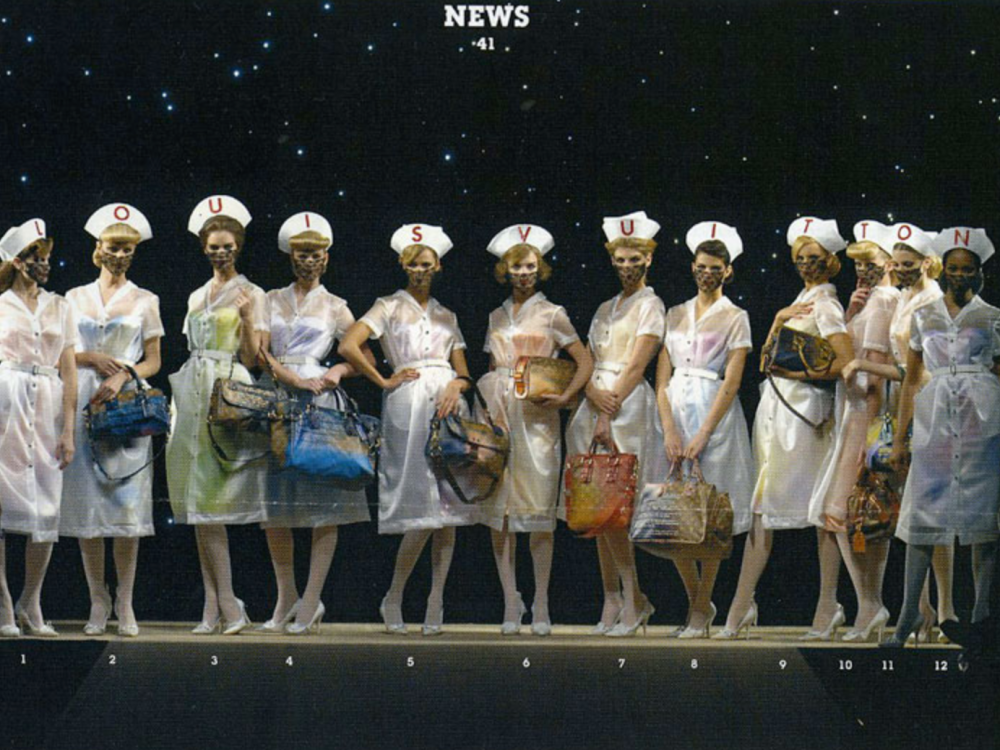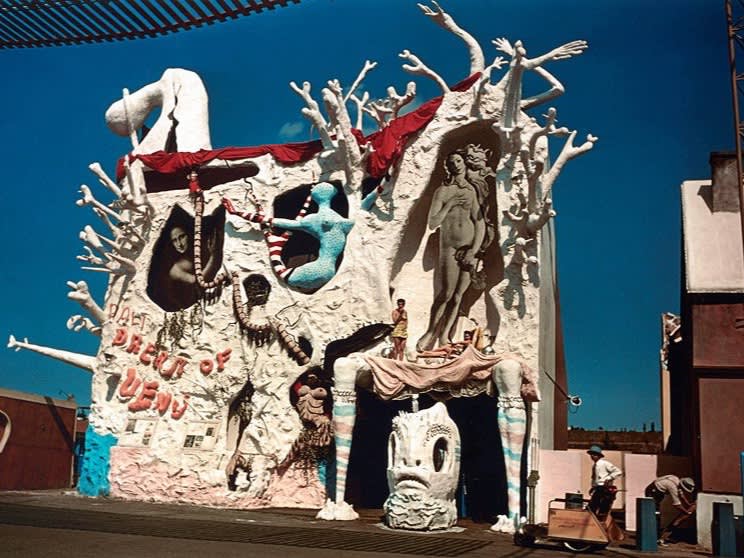
Niki de Saint Phalle
Tarot Garden, 1955
The beginning of Niki de Saint Phalle’s Tarot Garden tale began in 1955, following the artist’s first visit to Antoni Gaudi’s famed Park Güell in Barcelona, Spain. After hatching a plan to build her own 22-acre, whimsical public sculpture park, it wasn’t until an accidental run-in with Marella Agnelli – an old acquaintance from her modeling days – nearly two decades later in St. Moritz, that her elaborate dreams would finally inch closer to becoming a reality.
At the time of their chance meeting, de Saint Phalle – who was famously the only female member of the Nouveau Réalism movement in Paris in the 1960s – described to Agnelli her ideas for an enchanted sculpture garden inspired by the 22 Major Arcana of the tarots. Intrigued by her mystical vision, the Italian noblewoman suggested her brother’s estate atop the Etruscan ruins in Capalbio, Tuscany, as the perfect site for this ambitious project.
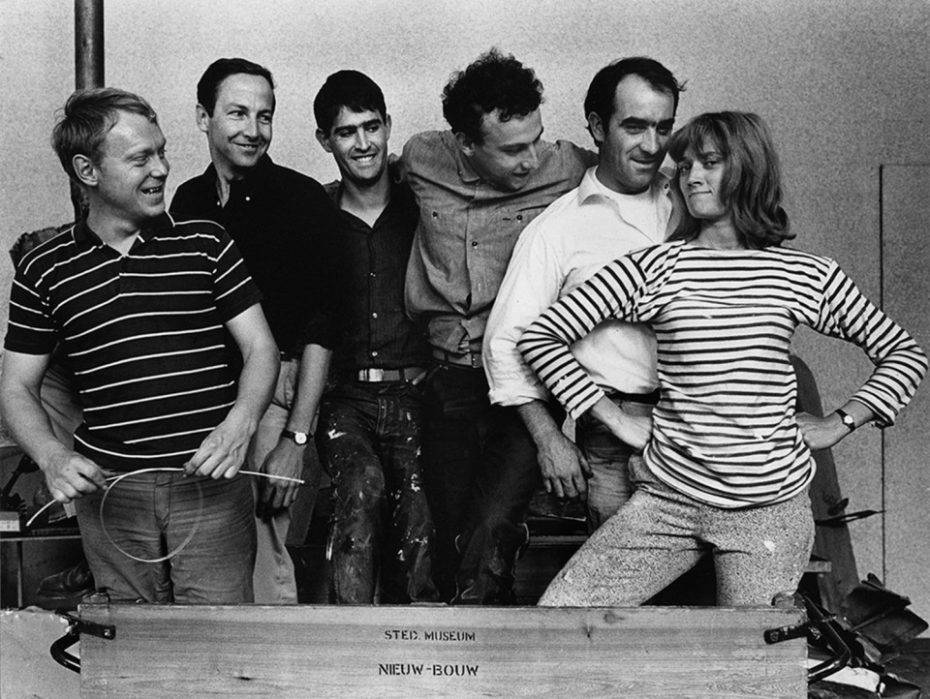
Niki de Saint Phalle and Friends
Stedelijk Museum, Amsterdam, 1962
In 1979, five years after their fortuitous rendez-vous, Niki de Saint Phalle set about on what would become a 20-year project – arguably the most ambitious of her career – transforming 14-acres of the Tuscan countryside into a public park which fulfilled her dreams of building a garden that would serve as a dialogue between sculpture and nature.
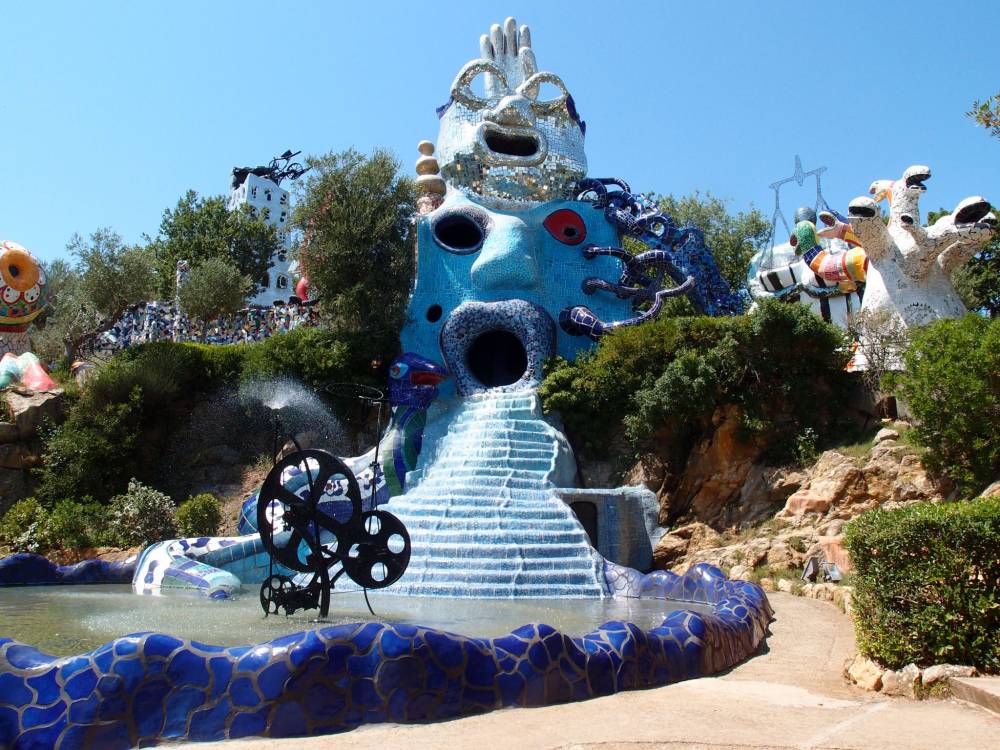
Niki De Saint Phalle
Tarot Garden
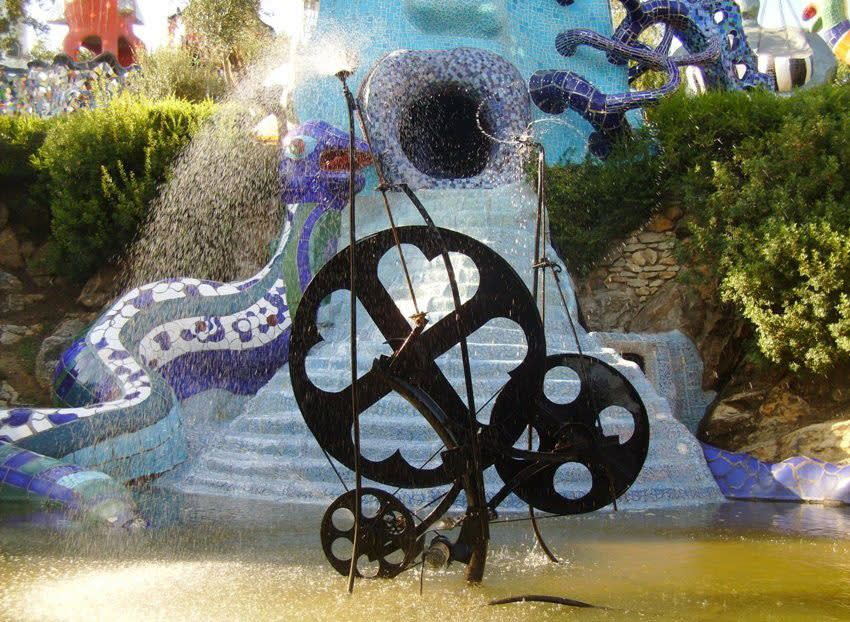
Niki De Saint Phalle
Tarot Garden, The Wheel of Fortune
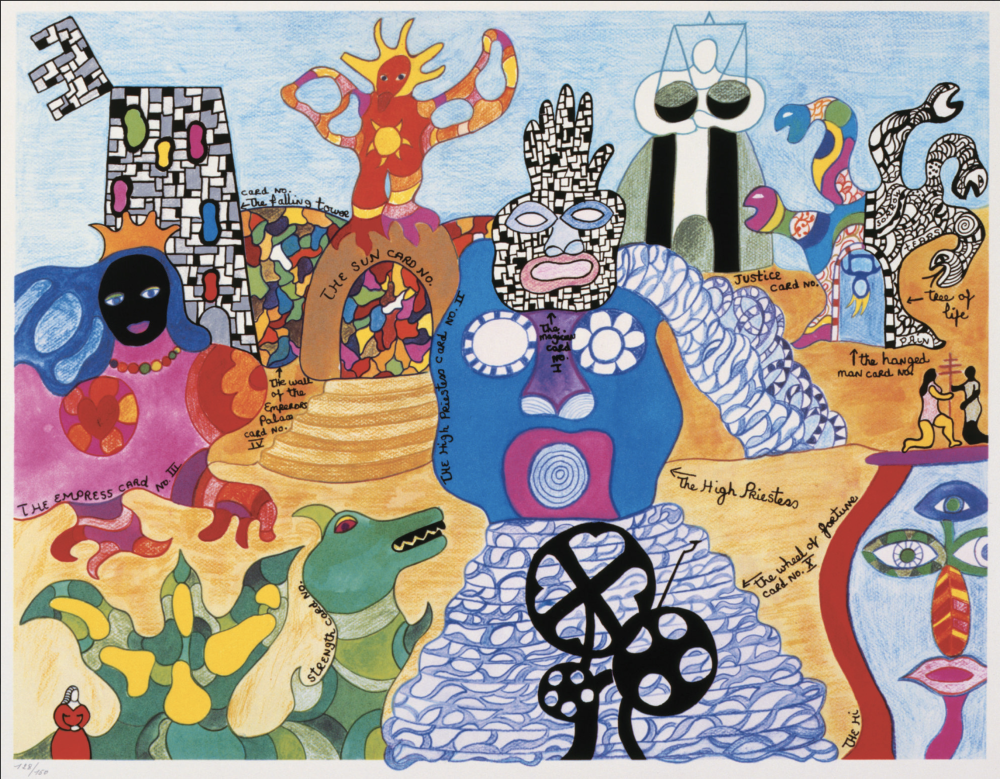
Niki de Saint Phalle
Lithograph of Tarot Garden, 1991
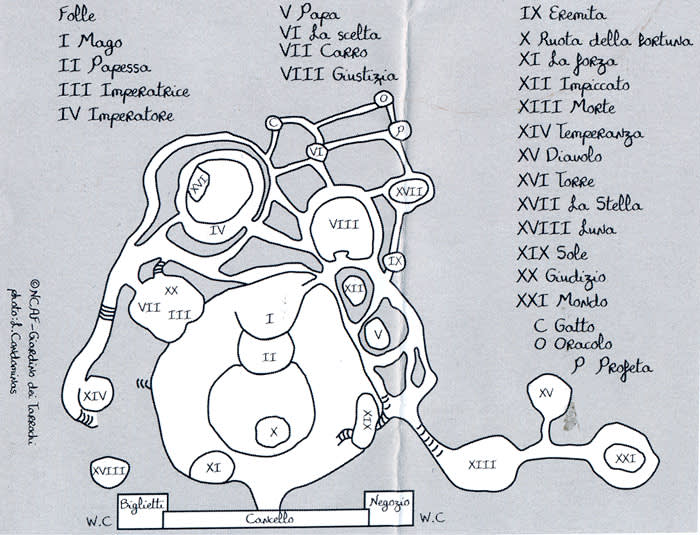
Niki De Saint Phalle
Map of the Tarot Garden
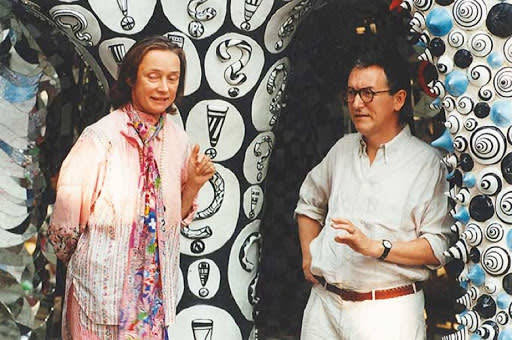
Niki de Saint Phalle and Julian Spalding
Talking in the Tarot Garden
Whilst this ‘garden of joy’ grew singularly from de Saint Phalle’s surrealist imagination, the artist enlisted a group of skilled collaborators throughout the project’s two-decade lifespan. Assisted along the way by her husband Jean Tinguely – whose motorized art and mechanical eye helped breathe life into his wife’s monumental sculptures – Swiss architect Mario Botta constructed the wall and entrance to the garden, while skilled craftsman, specialized workers, fellow contemporary artists, and even select locals – such as the town’s postman, Ugo Celletti, who built small stone pathways – contributed to the overall success of Niki’s vision. Despite the project’s varied roster of collaborators and artisans, the park’s phantasmagorical design could ultimately be the brainchild of only one woman.
Niki De Saint Phalle
Tarot Garden, The Hierophant
Niki De Saint Phalle
Tarot Garden, The Hanged Man
Niki De Saint Phalle
Tarot Garden, Death
Niki De Saint Phalle
Tarot Garden, Temperance
Niki De Saint Phalle
Tarot Garden, The Devil
Niki De Saint Phalle
Tarot Garden, The Moon
Niki De Saint Phalle
Tarot Garden, The World
Niki De Saint Phalle
Tarot Garden, The Sun
Inside the garden lays a surrealist landscape of over twenty sculptures, each one representing The Marjor Arcana of the Tarot. Upon entering, visitors are greeted by the Magician and the High Priestess, with the duality of their pairing representing ‘the masculine power of creation and the feminine inner intuition.’ As visitors continue they encounter a cascading waterfall leading into the Wheel of Fortune’s fountain – displaying one of several iron sculptures created by Jean Tinguely for the garden – the Empress symbolizing a great mother archetype keeping watch over the park, the Lovers, the Chariot, the Hanged Man, and Death, as well as spaces dedicated to the Stars, Sun, and Moon. Measuring between 39 and 49-feet high, many of the property’s concrete sculptures are hand-painted and ornately detailed with mirrors, mosaics, multi-colored ceramics, and Murano glass; creating a kaleidoscope of colors, textures, shapes, and graphics.
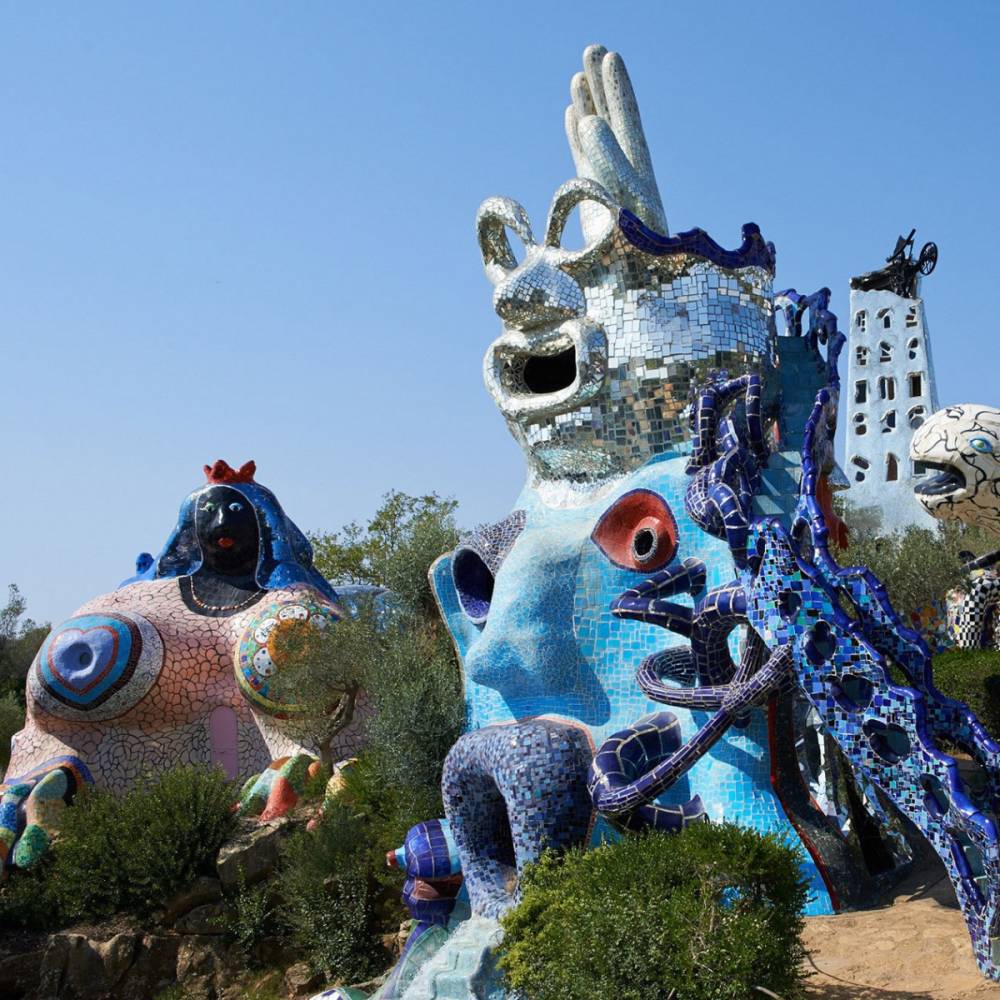
Niki De Saint Phalle
Tarot Garden, The Magician and the High Priestess
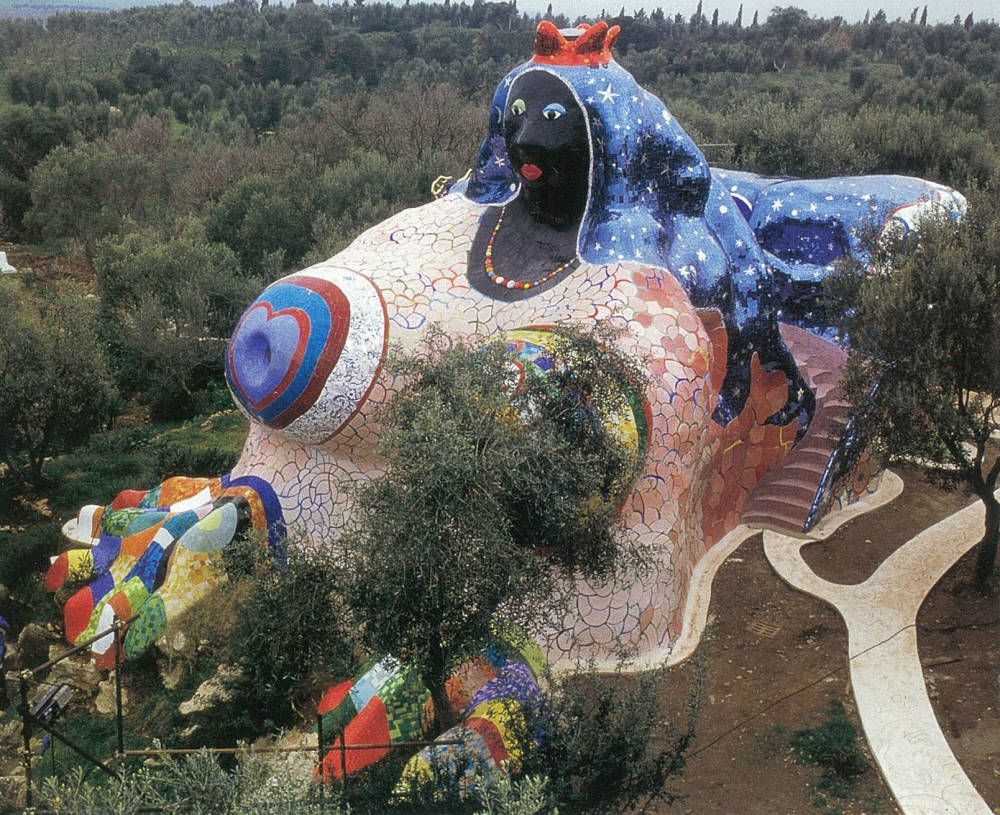
Niki De Saint Phalle
Tarot Garden, The Empress
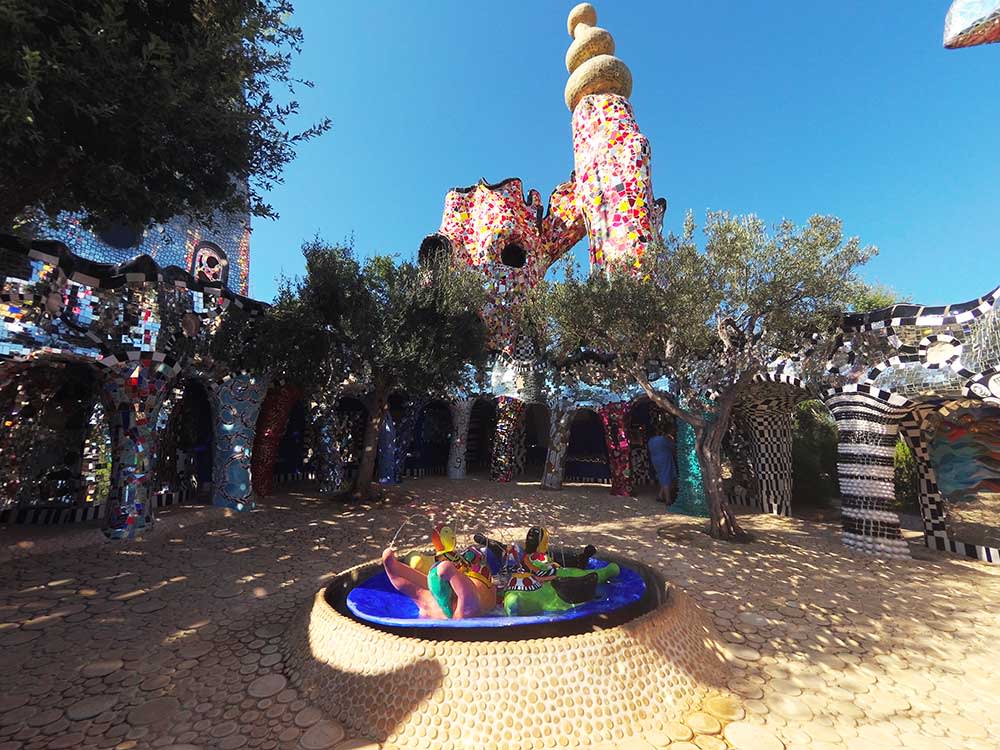
Niki De Saint Phalle
Tarot Garden, The Emperor
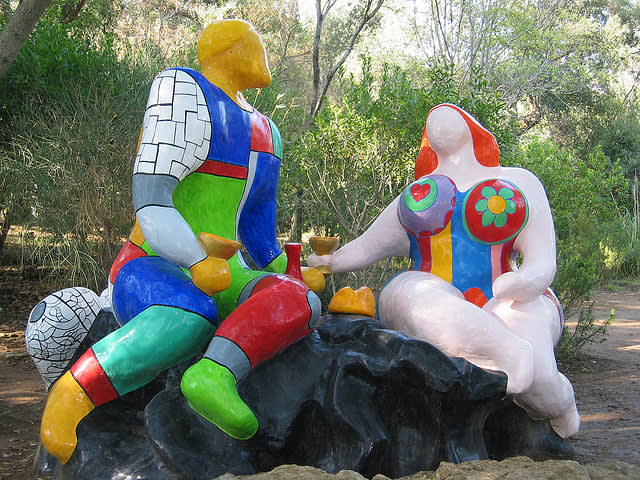
Niki De Saint Phalle
Tarot Garden, The Lovers/The Choice

Niki De Saint Phalle
Tarot Garden, The Tower
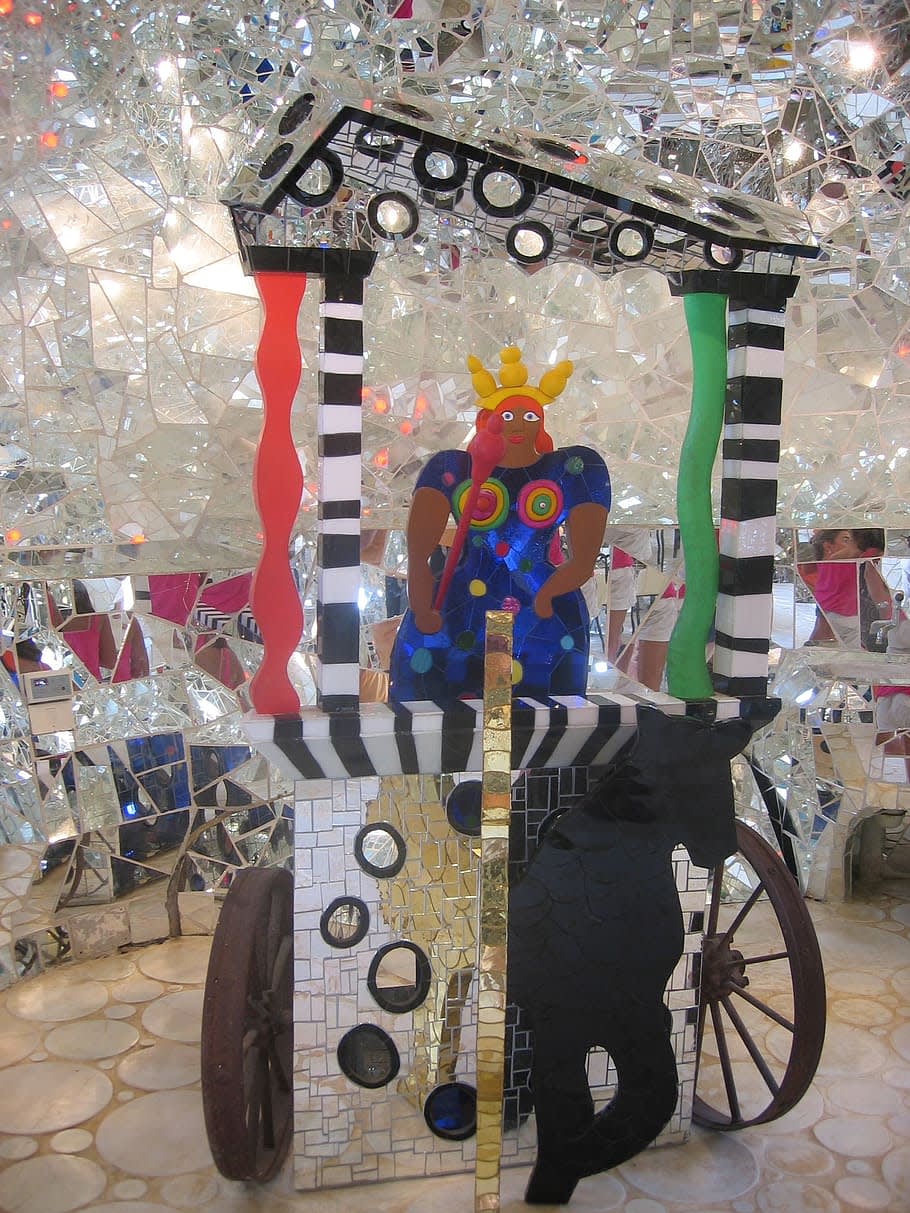
Niki De Saint Phalle
Tarot Garden, The Chariot
Seen as a dichotomy of modern and ancient times, the garden also draws from the past and present of Niki’s own artistic oeuvre. Many of de Saint Phalle’s signature voluptuous ladies, also known as “Nanas” – which the artist began producing in the 1960s – are incorporated into the Garden’s design; drawing attention not only to Niki’s trademark aesthetic, but to the primary focus of the project being a celebration of femininity.
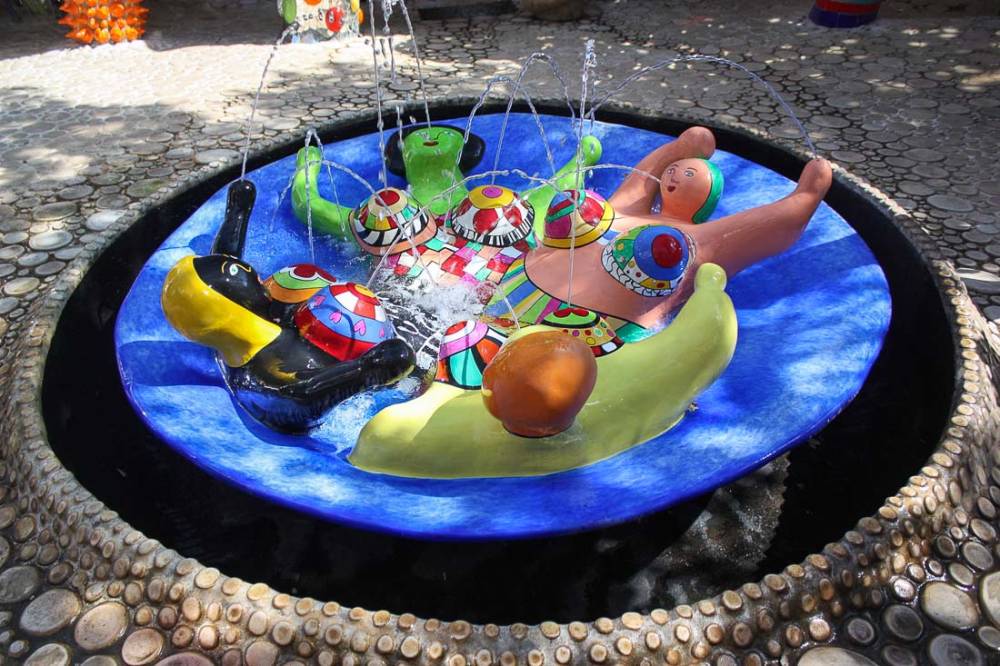
Niki de Saint Phalle
Tarot Garden, Fountain of Nanas

Niki de Saint Phalle
Tarot Garden, Nana
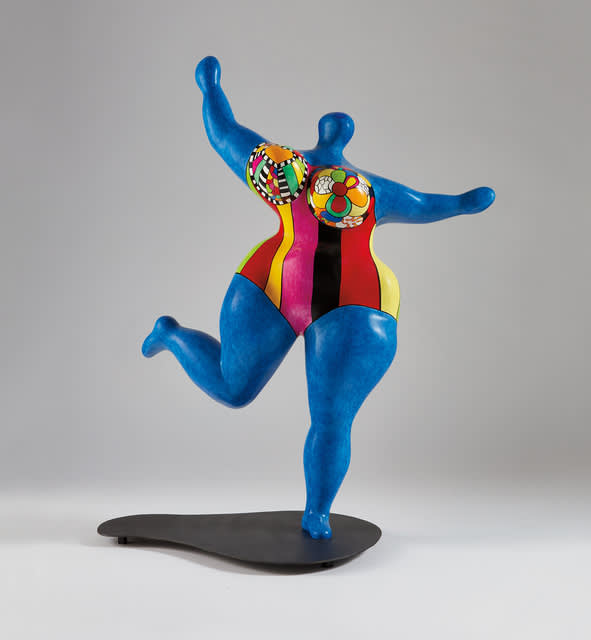
Niki de Saint Phalle
Dawn (bleue), 1993
Despite the Garden’s celestial appearance, the construction process – which began in 1979 and continued through the park’s opening in May 1998 – was far from heavenly. By 1983, de Saint Phalle became so immersed in her creation that she permanently relocated to the land on which she was building the garden; first living inside the breasts of the Empress sculpture before moving in 1988 to a small loft apartment on the property. Furthermore, to combat budgetary issues throughout the project’s two-decade construction period, she launched a Niki de Saint Phalle perfume – ultimately funding a third of the five-million-dollar cost – while her taxing dedication to the garden’s completion resulted in the development of arthritis, plaguing her for the remainder of her life.
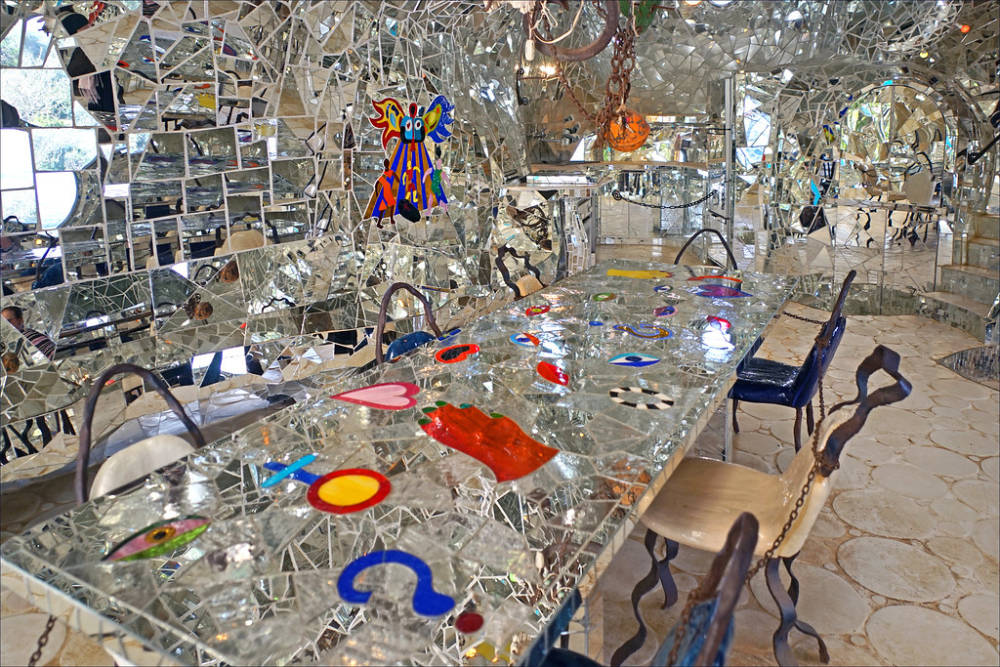
Niki de Saint Phalle
Tarot Garden, Kitchen inside the Empress
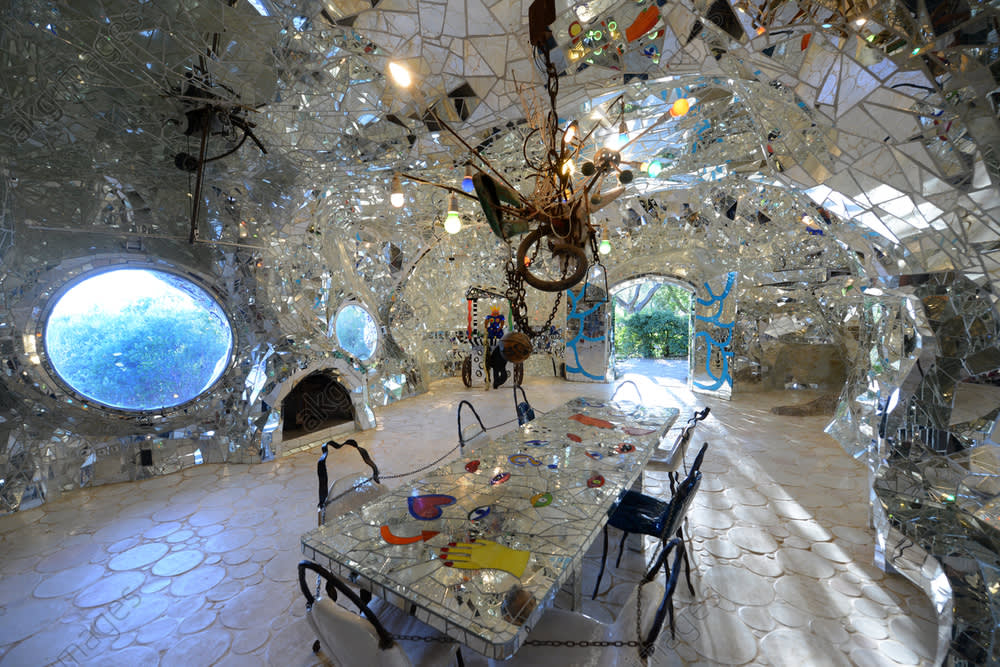
Niki de Saint Phalle
Tarot Garden, Dining Room inside the Empress
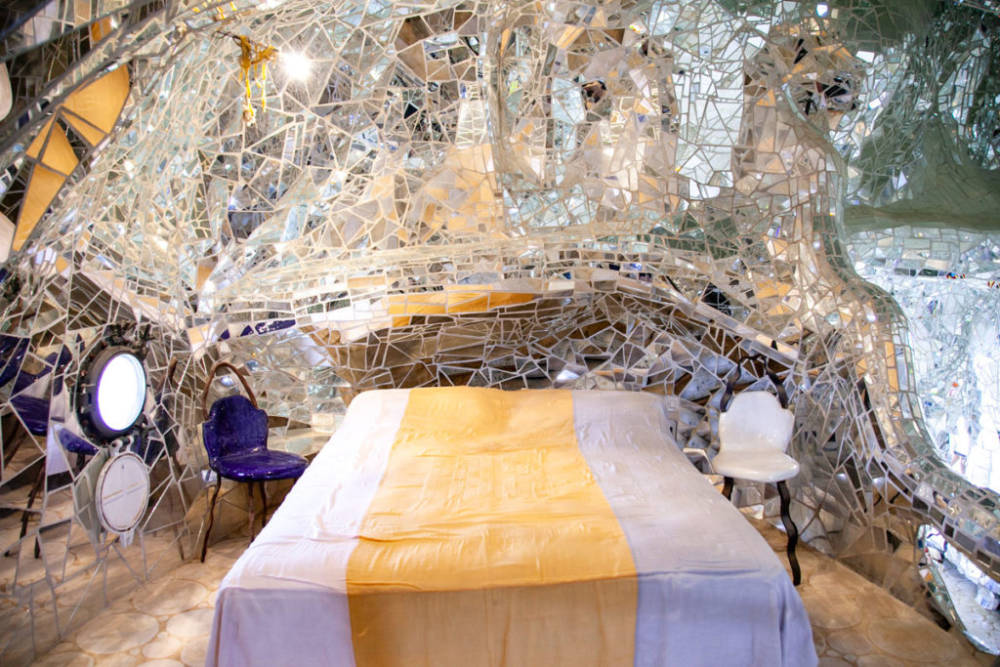
Niki de Saint Phalle
Tarot Garden, Bedroom inside the Empress
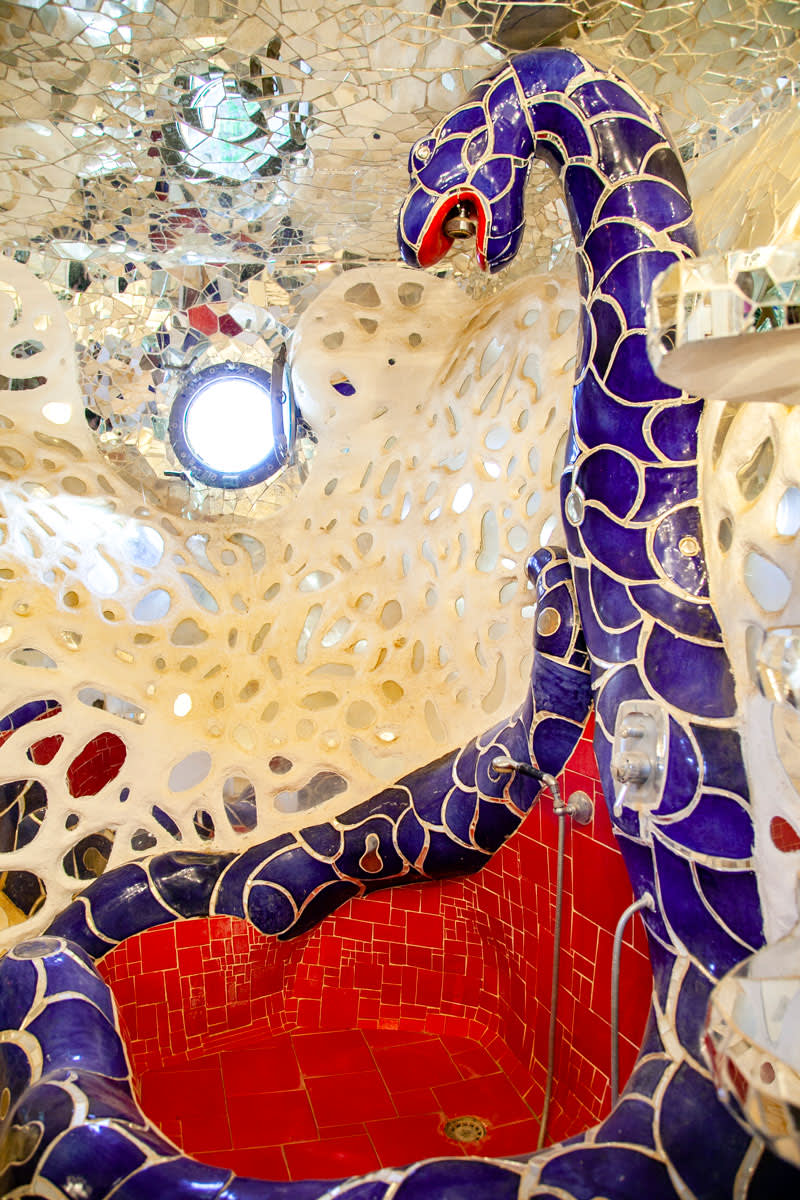
Niki de Saint Phalle
Tarot Garden, Bathroom inside the Empress
Though all further work on the project officially stopped in 2002 following de Saint Phalle’s passing, the Tarot Garden remains a true 20th century artistic marvel personifying Niki’s imaginative psyche, and the ultimate achievement of her entire, decades-spanning oeuvre.
